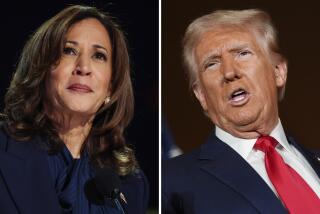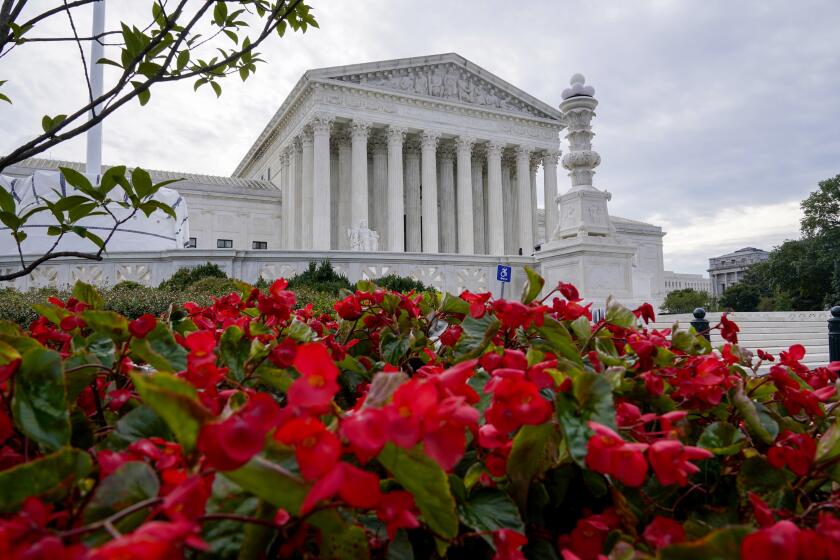From Deficit Hawk to Supply-Side Dove
- Share via
A funny thing happened to Bob Dole on his way to the Republican National Convention--the once fierce deficit hawk is now championing the supply-side economics he disdained during the Reagan administration. Anxious to score big points in presidential politics, the Kansan is now an ardent proponent of a $548-billion tax cut over six years. The obvious question is how to balance the budget.
Dole says it’s all possible in his reincarnation of supply-side economics because the tax cuts would be offset by additional tax revenues and spending cuts. But he would keep hands off Social Security and Medicare, by far the two most expensive entitlement programs.
The credibility of Dole’s plan rests on his assumptions about the economy, how consumers and investors would react to tax cuts, and projected spending. In many ways the assumptions resemble those under the supply-side policies that Dole used to distance himself from.
Dole believes that an economic growth rate of at least 3.5% is desirable for the nation. The centerpiece of his proposal to achieve that is a 15% across-the-board cut in federal income tax rates over three years. The plan also includes a 50% cut in the capital gains tax, a tax credit of $500 per child, a tax-free college savings plan--an idea with possibilities--and a decrease in Social Security taxes on senior citizens. A lack of details from the Dole camp makes it difficult to evaluate most of these proposals.
To reach a balanced budget by the year 2002, Dole would have to find savings or additional revenues. His advisors figure that the tax cuts would help to stimulate enough economic growth to bring in about $145 billion in new tax revenues. He would make up for $217 billion more by cutting 10% from government non-defense administrative costs and 1% from other spending programs, including $47 billion from the budgets of the Energy and Commerce departments, Cabinet departments that remain the GOP’s favorite political targets. He also would raise $34 billion by selling licenses to use broadcast airwaves. Defense, Social Security and Medicare spending would be exempt from further cuts.
President Clinton, who promised a tax cut in the 1992 campaign but pushed through an increase after taking office, naturally blasted the Republican’s proposal. He supports targeted tax cuts and a firm focus on reducing the deficit. The administration and Federal Reserve Chairman Alan Greenspan each have said that the economy cannot grow much faster than 2.5% without triggering inflation. An inflation-wary Fed probably would respond to higher growth by raising interest rates, which would slow economic expansion.
Dole’s across-the-board tax cut plan relies too heavily on assumptions that clear and certain behavior results from specific tax policies. For example, when the 1993 tax increases on higher incomes were implemented, there were cries of pending disaster, that the stock market would tumble. Though the stock market has gone through downward adjustments recently, since 1993 it has rolled to record highs. That goes to show that tax policy assumptions can go awry in the real world. And good political teasers, like proposals to cut taxes, don’t necessarily save troubled campaigns.
More to Read
Get the L.A. Times Politics newsletter
Deeply reported insights into legislation, politics and policy from Sacramento, Washington and beyond. In your inbox twice per week.
You may occasionally receive promotional content from the Los Angeles Times.










